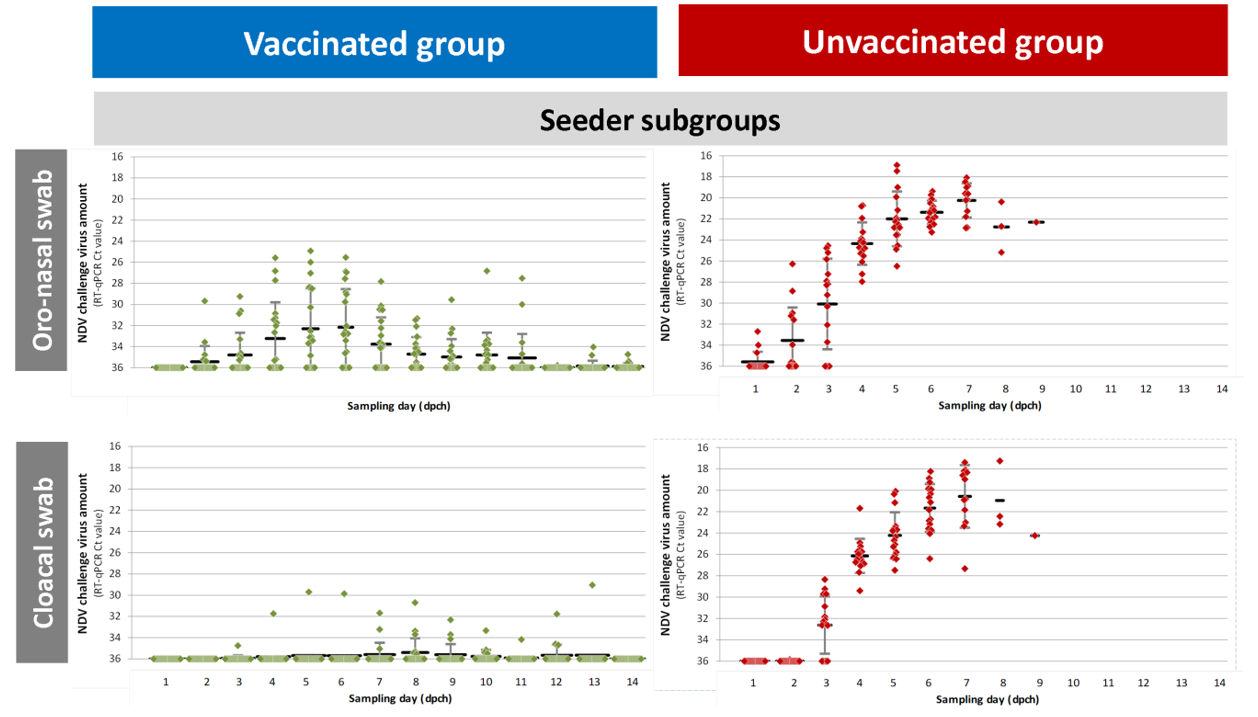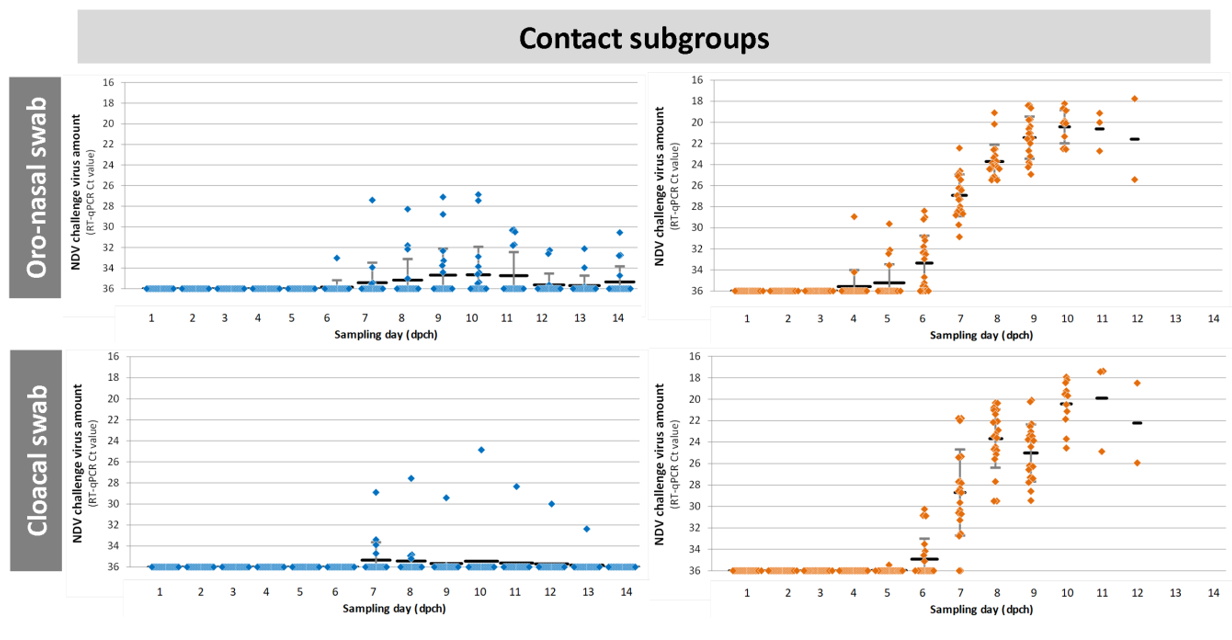



A proven reference for the reduction of Newcastle disease
Commercial poultry production is facing many health challenges, including respiratory ones. As a consequence, mitigation or reduction of virus circulation in between houses or farms is of paramount importance to keep the respiratory tract healthy and be able to reach one’s production targets. Besides biosecurity, there is a need to get access to vaccines with the best features in terms of protection, but also prevention against the uncontrolled circulation of avian paramyxovirus type 1, also known as Newcastle disease virus (ND virus) in its pathogenic (‘velogenic’) form.Vectormune® ND is an innovative vector vaccine which elicits an early, broad and long lasting immunity; vaccinated chickens shed significantly less virus than unvaccinated ones.
A recent publication[1] about Vectormune® ND provided the additional asset of significantly reducing the likelihood of virus transmission among birds. Indeed, a velogenic ND virus was provided with a reproduction ratio (R0) figure of 3.20 ; it basically means that 10 infected chickens are able to transmit the disease to 32 new birds, hence explaining the spreading capacity of this disease to neighboring houses; the outcome will be increased losses, including high mortality rate in case of velogenic strains. On the contrary, in Vectormune® ND-vaccinated broilers, this R0 dropped to 0.82, which means that vaccinated flocks will significantly reduce and slow down the spreading of the virus. In addition, they will survive thanks to a strong protection.
This publication helps us to understand that Vectormune® ND controls and prevents Newcastle Disease outbreaks despite of a different genotype between challenge strain and vaccine insert.

Seeder Groups

Contact Groups
In conclusion, Vectormune® ND is a strong tool to break the uncontrolled transmission of NDV among chickens in a house, in between houses in a farm, and ultimately among farms in a high densely populated poultry area. Hence, Vectormune® ND helps to prevent and control Newcastle Disease outbreaks in poultry industry and protects the performance. By this way, Ceva Animal Health provides one more evidence towards supporting its customers to achieve their targets all around the world.
| References | ||||
|---|---|---|---|---|
| [1] Tatár-Kis T, Fischer EAJ, Cazaban C, Walkó-Kovács E, Homonnay ZG, Velkers FC, Palya V, Stegeman JA. A Herpesvirus of Turkey-Based Vector Vaccine Reduces Transmission of Newcastle Disease Virus in Commercial Broiler Chickens with Maternally Derived Antibodies. Vaccines (Basel). 2020 Oct 16;8(4):614. doi: 10.3390/vaccines8040614. PMID: 33081359; PMCID: PMC7720113. | ||||









